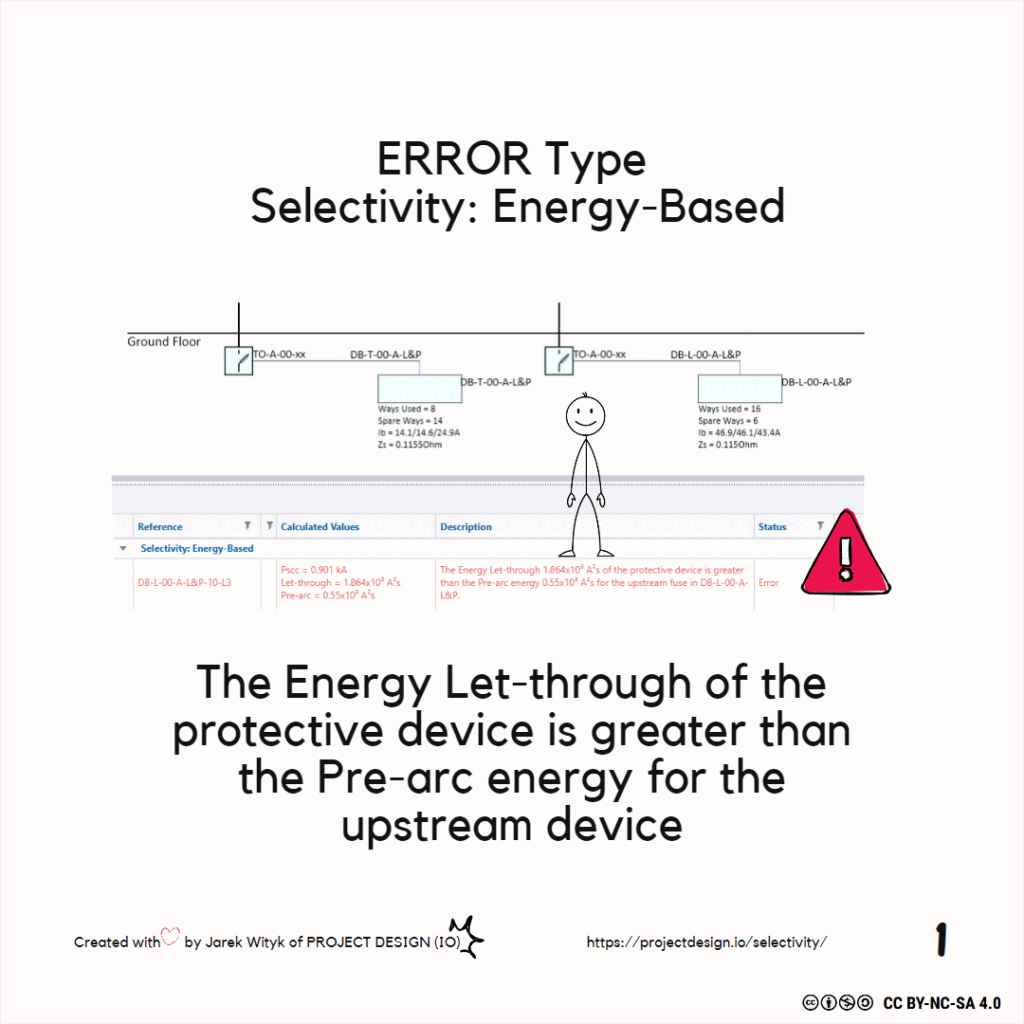Revit Guides
Data Management

Resolving Selectivity Issues in Electrical Design
Free Trimble ProDesign Introduction Training Course
Selectivity is achieved where,under overcurrent conditions, the protective device nearest the fault operates rather than any protective device on the supply side of it,ensuring that an overcurrent condition will be disconnected without disruption to any other circuits in the system.
The term selectivity supersedes previously used term ‘discrimination’.
Resolving Energy Let-through Issues in Electrical Design
When working with electrical design software like Trimble ProDesign, encountering error messages can be a common experience. One such error that many designers face is:
Error Message: “The Energy Let-through of the protective device is greater than the Pre-arc energy for the upstream device.”
This post aims to help you understand and resolve this selectivity energy-based error, which has been a frequent question among the participants of my free Electrical Design—Trimble ProDesign Introduction Training Course.
Understanding the Issue
The error message indicates that the energy let-through (I²t) of the downstream protective device (such as an RCBO) exceeds the pre-arc energy rating of the upstream fuse in a tap-off. This scenario means that in the event of a fault, the energy passing through the downstream protective device is greater than what the upstream fuse can handle without sustaining damage.
Key Terms Explained
- Energy Let-through (I²t): This is a measure of the energy that passes through a protective device during a fault condition, calculated as the current squared multiplied by the duration of the current flow.
- Pre-arc Energy: This refers to the amount of energy a fuse can absorb before it starts to melt or arc. It is critical for ensuring the safe operation of the upstream fuse.
Example Solution
Option 1: Change the Downstream Device
Look for an RCBO with a lower I²t value that does not exceed the upstream device’s A²s rating. This will ensure that the energy let-through during a fault remains within the safe limits of the upstream fuse.
Option 2: Change the Upstream Fuse
Select a fuse with a higher pre-arc energy rating that can handle the let-through energy of the downstream device. This approach ensures that the upstream fuse can safely manage the energy passing through in the event of a fault.
Ensuring System-wide Selectivity
It is essential to note that selectivity must work across the entire system, not just in isolated parts. Ensuring proper coordination between all protective devices in your system will help maintain safety and reliability.
By understanding and applying these solutions, you can effectively manage and resolve selectivity issues in your electrical system.
BS ISO 22263:2008
Organization of information about construction works Framework for management of

Domestic PV sizing rule-of-thumb (RoT)
Domestic PV sizing rule-of-thumb (RoT) Grid-tied, focused on self-consumption UK

